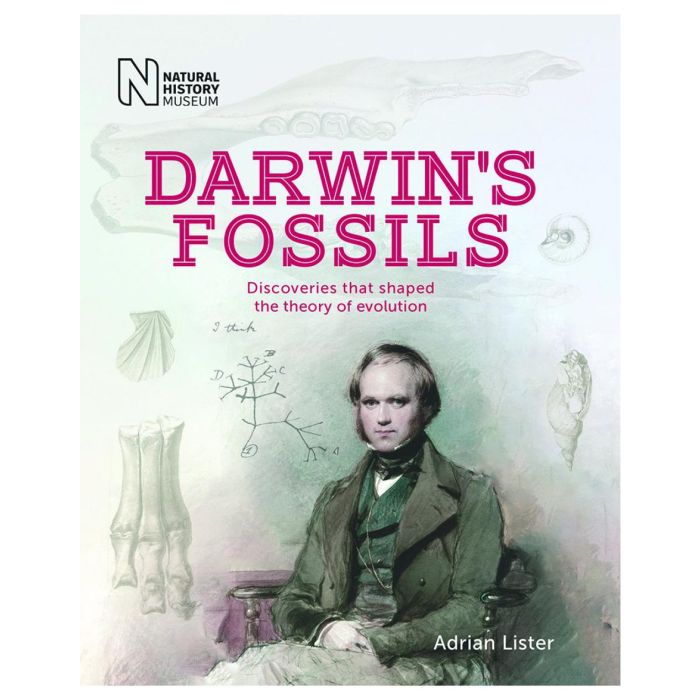My Cart
Your cart is empty
Looks like you haven't made your choice yet.
- Subtotal
Darwin's Fossils

Discoveries that shaped the theory of evolution
- Natural History Museum (Quarto)
- by Adrian Lister
More Information
| Publisher | Natural History Museum (Quarto) |
|---|---|
| ISBN | 9780565093921 |
| Author(s) | Adrian Lister |
| Publication date | April 2018 |
| Edition | Paperback |
| Dimensions | 229 x 176 mm |
| Pages | 224 |
| Language(s) | English ed. |
Description
Charles Darwin's voyage on the HMS Beagle was a journey that would revolutionise our understanding of the natural world and our place in it.
The magisterial work it spawned, On the Origin of Species, is widely associated with the flora and fauna of the Galapagos Islands. Less well known is Darwin's passion for geology and how his fossil discoveries in South America by demonstrating the relationship between extinct lifeforms and living species shaped his theory of evolution.
This is the story of those fossil-hunting adventures in the 1830s, the pioneering science behind the fossils he found, and how these remarkable discoveries played a crucial role in forging Darwin's revolutionary ideas.
Natural History Museum expert Adrian Lister explores these incredible discoveries and shows how they became fundamental in leading Darwin to his theory of evolution through natural selection.
Many of Darwin's fossils survive today and the book draws on the latest research into them to help explain their importance. The fossils themselves are beautifully illustrated with newly commissioned photographs and superb line drawings produced in the 19th century, and brought to life through artists reconstructions of the extinct animals as understood today.

Darwin's Fossils
